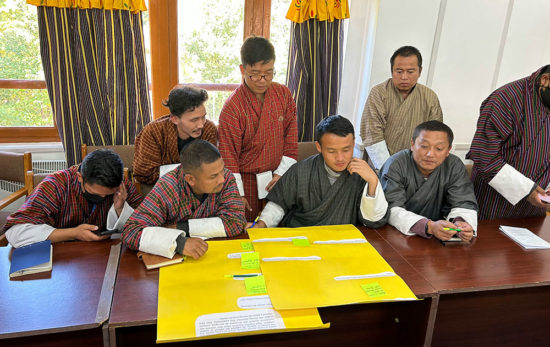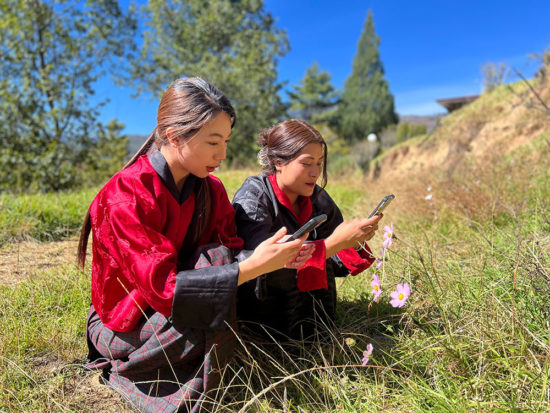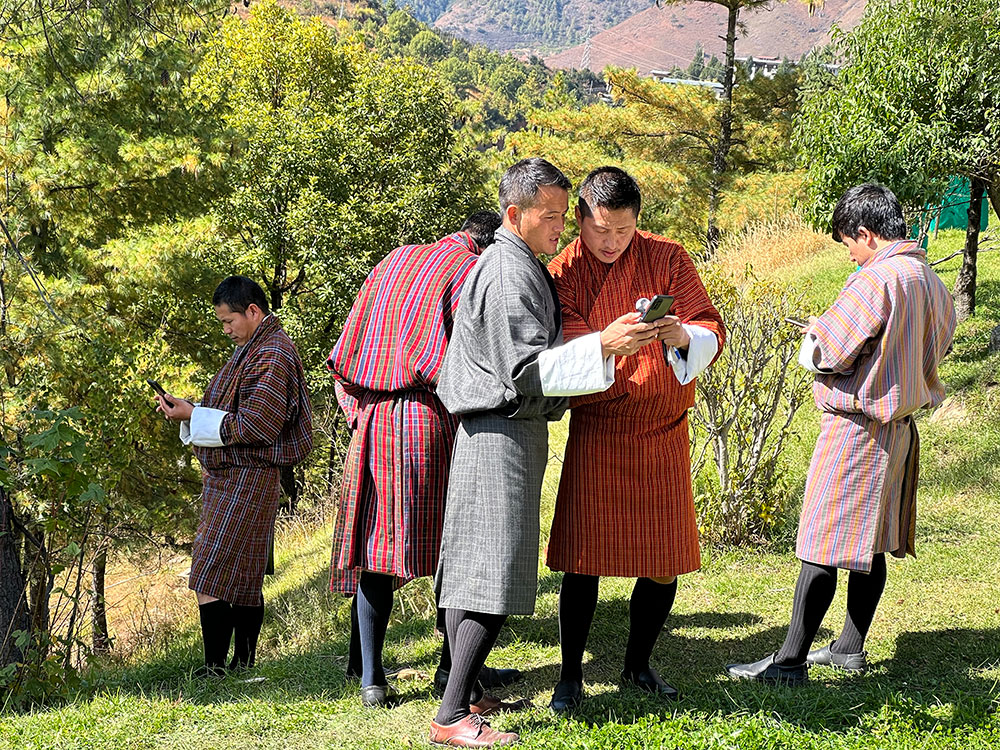Tour guides in Bhutan are undergoing a training workshop on biodiversity, biopiracy and its relevance to tourism conducted by the National Biodiversity Centre in Serbithang, with support from the GEF-UNDP Ecotourism Project under the Department of Tourism.
Thimphu: The training workshop aims to create awareness on the importance of biodiversity conservation in Bhutan, biopiracy and its relevance to tourism among the tour guides as they are the ambassadors of the country to our visitors. The workshop also aims to garner support from the tourism sector in biodiversity conservation, and mitigation of biopiracy and misappropriation in the country.
A series of similar training workshops will be conducted in the following weeks in Samdrup Jongkhar, Gelegphu, Phuentshogling and Paro International Airport for relevant stakeholders and frontliners. This training is organized by the National Biodiversity Centre (NBC) in collaboration with the Department of Tourism with support from the GEF-UNDP Ecotourism Project “Mainstreaming biodiversity conservation into the tourism sector in Bhutan”.

Tour guides solving questions on biodiversity and biopiracy in Bhutan

Tour guides taking pictures to upload images on Bhutan Biodiversity Portal
Awareness on national measures on conservation and sustainable use of biodiversity by regulating Bhutan’s biodiversity, understanding misappropriation and biopiracy, instructions on how to make use online platforms like the Bhutan biodiversity portal and BioBlitz were some of the topics covered during the training workshop. BioBlitz is an intense period of biological surveying in an attempt to record all the living species within a designated area.
NBC Program Director Dr Karma Dema Dorji, said, “Globally, Bhutan is well known as a country with rich biodiversity and all Bhutanese travelling outside Bhutan also take a pride in talking about our pristine biodiversity. So, our foreign guests would want to know more about Bhutan’s biodiversity when they arrive in the country.”
“Tour guides are, therefore, the most important ambassadors and focal persons. So, it is very important for the guides to know about biodiversity and also biopiracy. Their work requires them to deal with outsiders and there is always a certain degree of risk of losing species and especially, if the species is endemic to Bhutan and is of high value in which case Bhutan would lose out of the benefits. If the guides are aware of biopiracy, they can be mindful of their clients taking any species out of the country unknowingly or by accident,” she said.
The participants were also trained on the identification of plants and animal species under the appendices of the CITES hands-on operation, and citizen-contribution on the Bhutan Biodiversity Portal. CITES (the Convention on International Trade in Endangered Species of Wild Fauna and Flora) is an international agreement between governments. The participants visited the Biodiversity Interpretation Centre, National Invertebrate Repository, Native Plant Conservation Facility, Genebanks, National Herbarium, Bioprospecting and Natural Product Development Lab and, National Plant Conservation facility located at National Biodiversity Centre in Serbithang.
A participant, Tshulthrim, said with such trainings tour guides will be able to identify flora and fauna in the country, and also be able to contribute pictures and information on online platforms like Bhutan biodiversity portal. He said, this will enable tour guides to also contribute to the country’s data resource on biodiversity which will be priceless for now and for generations to come.
Another participant, Tashi Lhamo said she didn’t know about biopiracy and CITES listed species of wild fauna and flora before, but now she is well-informed about the rules and regulations. She said this information will be useful for her as a tour guide while traveling with her guests in and around the country.
According to Peday, a tour guide, such trainings should be made mandatory in tourism sector. “Globally Bhutan is known for its rich biodiversity but most of us working in the tourism industry are not aware of some of most important aspects of our biodiversity and also unfamiliar about biopiracy.” She added, through this training she learned valuable lessons on Bhutan’s endangered species, biodiversity and also which species are unique and precious to Bhutan and globally. This, she said, has renewed her pride in Bhutan’s rich biodiversity, and most essentially, makes her a better tour guide.
Biodiversity status of Bhutan
According to National Biodiversity Centre Status Report 2022, Bhutan has 70.77% of the total area under forest cover and 51.44% secured as protected areas and biological corridors. Bhutan is home to 11,248 species of flora and fauna including 4978 species of vascular plants, 3511 insects, 129 mammals, 736 birds, 125 fishes and 158 amphibians and reptiles. To date, over 300 species of medicinal plants have been found at altitudes ranging from 200 to 7800 meters above sea level. In terms of domestic biodiversity, there are more than 55 species of agriculture crops and 6 species of livestock. Some of these have adapted to the country’s rugged mountains and harsh climatic conditions and, therefore, bear distinctive features which need to be conserved, especially to build resilience in the face of climate change for food security and improved livelihoods.
Bhutan became party to and ratified the UN Convention on Biological Diversity in 1995 by the 73rd National Assembly of Bhutan in recognition of the country’s biodiversity conservation and sustainable utilization efforts, and subsequently, became party to the Nagoya Protocol on Access and Benefit Sharing after ratification by the 9th session of the 1st Parliament of Bhutan in 2012.
You can access Bhutan Biodiversity Portal at www.biodiversity.bt

This series is sponsored by Ecotourism Project “Mainstreaming Biodiversity Conservation into the Tourism Sector in Bhutan” funded by GEF-UNDP through the Department of Tourism, RGoB.


